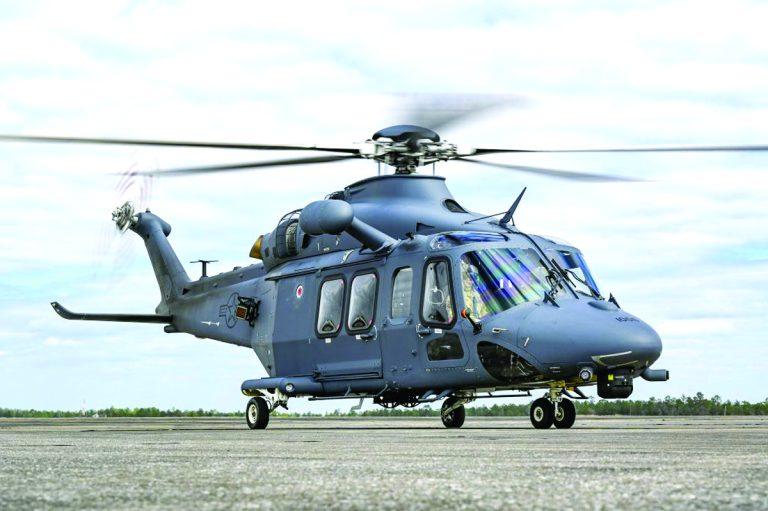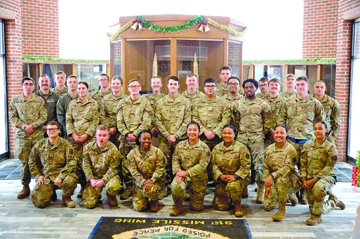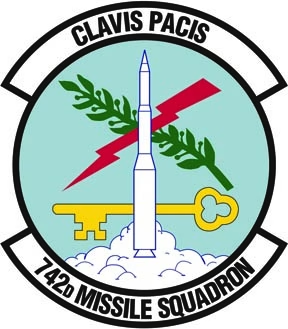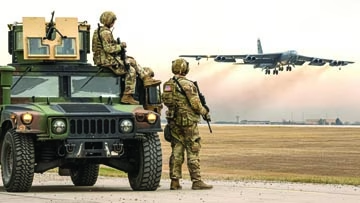The Air Force is dramatically scaling back its plans for the MH-139 Grey Wolf helicopter, cutting its projected fleet from 80 to 42 aircraft and reducing the number of bases that will host the new chopper.
For now, that means some units will continue to operate the aging UN-1N Huey, some of which have been flying since the Vietnam War.
The Air Force’s original plan was to procure 84 helicopters to provide security and transport across sprawling ICBM fields, senior leader and executive airlift in the National Capital Region, and aircrew survival training.
That plan was later trimmed to 80 aircraft, and the service’s 2025 budget documents now show a cut all the way down to 36. However, an Air Force spokeswoman told Air & Space Forces Magazine that the program of record would actually be 42 helicopters since six test aircraft were already delivered.
To accomplish such a reduction, the Air Force has decided to only field the MH-139 at its three ICBM bases:
- F.E. Warren Air Force Base, Wyo.
- Malmstrom Air Force Base, Mont.
- Minot Air Force Base, N.D.
All three bases will still get their originally planned 11 helicopters, added the spokeswoman. Malmstrom just recently received its first MH-139, welcoming the Grey Wolf on March 9. It is slated to receive its full complement by the summer of 2025.
In addition, the MH-139 schoolhouse will still be at Maxwell Air Force Base, Ala., which is slated to get its first chopper this month.
Previously planned locations Joint Base Andrews, Md.; Fairchild Air Force Base, Wash.; and Yokota Air Base, Japan, will all not receive any MH-139s now. The Air Force had already announced Andrews as the fourth location to get the Grey Wolf, with a projected fleet size of 25.
The cuts to the program came “due to fiscal pressures and considering remaining service life of the UH-1N Huey,” the spokeswoman said.
However, budget documents note that the UH-1N Huey helicopters “have significant capability gaps in the areas of speed, range, endurance, payload capacity, and aircraft self-protection.”
The MH-139, a joint venture with Boeing and Leonardo, is a militarized version of the AW139 helicopter that is capable of flying faster, higher, farther, and with more weight than the UH-1N. The program has had hiccups, though—issues with Federal Aviation Administration (FAA) certification caused the Air Force to delay its fiscal 2021 purchase of eight helicopters and skip its 2022 buys completely. Even after it gained FAA certification, the Pentagon’s Office of the Director of Operational Test & Evaluation (DOT&E) warned in its annual report that the Grey Wolf might fall shore of “operational effectiveness requirements.” The report noted concerns about with the automatic flight control system, sensor display, intercom system, cabin layout, and “restrictions on takeoffs in crosswinds or near obstacles.”
The 2023 edition of the report similarly warned that the program “faces several ongoing risks to … meeting operational effectiveness, suitability, and survivability requirements.” While some progress has been made, the report authors noted that the MH-139 still requires some FAA certifications to start initial operational testing, which are not projected to be approved until the fourth quarter of fiscal 2024.
On top of that, the Air Force wants to add an additional radio to the aircraft, “but problems with internal communications persist,” the report stated. The service also is adding an environmental conditioning system, but that system’s effects on the helicopter’s power and weight requirements is not fully known.
Despite all this, the Air Force wants to keep production high now and cut the program on the back end—the service is maintaining its request for eight helicopters in fiscal 2025, then dropping to two each for the next four years to fill out the fleet. In its 2024 budget request, USAF projected a high buy of 15 helicopters in 2026, with smaller declines after that.
Air Force officials have noted that their procurement and research and development budgets took hits in the 2025 request due to spending caps set under the Fiscal Responsibility Act and the need to maintain operations and personnel accounts. The service is also curtailing its planned F-15EX and T-7 programs of record, though by far smaller amounts, and trimming its near-term procurement of F-35s.
The MH-139, however, is taking the biggest cut. In terms of procurement, the move reduces the program’s estimated budget from $2.55 billion to $1.42 billion. It does, however, raise the unit cost per helicopter from $34.47 million to $39.37 million. That rise of 14.2 percent puts the program very close to a Nunn-McCurdy breach—the law requires Congress be notified of any program that has its unit cost rise 15 percent above current estimates.












